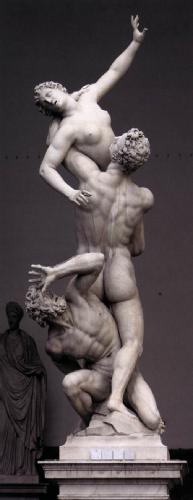Visual Representations of Violence
Seminar Questions
- How far did the representation of early modern violence vary in different visual genres?
- To what extent did the visual representation of violence vary across Europe and over time?
- How were visual representations of violence perceived in the early modern period?
- What are the advantages and disadvantages of visual sources for the understanding of violence in early modern Europe?
Required Reading
- All students should select and research one image depicting violence which was produced in Europe between c. 1500 and c. 1750. You can find images using these databases:
- British Museum Collection Online [Searchable by subject and date. Try searching for terms such as battle, crucifixion, murder, rape, execution, etc.]
- The Web Gallery of Art [Searchable by subject and date. Try searching for terms such as battle, crucifixion, murder, rape, execution, etc.]
- All students should read
- Ruff, Julius R., Violence in Early Modern Europe 1500-1800 (Cambridge, 2001), Chapter 1.
AND one of the following items:
-
- Hornstein, Katie, 'Just Violence: Jacques Callot’s Grandes Misères et Malheurs de la Guerre', Bulletin of the University of Michigan Museums of Art and Archaeology 16 (2005)
- Gallonio, Antonio, Trattato degli instrumenti di martirio e delle varie maniere di martirizzare (Rome, 1591) [Look at the images]
- Kirch, Miriam Hall, 'Death on the Danube', in Jonathan Davies (ed.), Aspects of Violence in Renaissance Europe (Farnham, 2013), pp. 61-81.
- Merback, Mitchell B., The Thief, the Cross and the Wheel: Pain and the Spectacle of Punishment in Medieval and Renaissance Europe (London, 2001), Introduction
E-Resources
- Jacques Callot and the Miseries of the Thirty Years' War
- Early English Books Online
- Eighteenth Century Collections Online
- See also the e-resources for the other seminars.
Further Reading
Bale, Anthony, Feeling Persecuted: Christians, Jews and Images of Violence in the Middle Ages (London, 2010)
Battistini, Matilde, Symbols and Allegories in Art, trans. Stephen Sartarelli (Los Angeles, 2005)
Baxandall, Michael, Painting and Experience in Fifteenth Century Italy: A Primer in the Social History of Pictorial Style, 2nd. ed. (Oxford, 1988) [Especially the chapter on 'The Period Eye']
Burke, Peter, Eyewitnessing: The Uses of Images as Historical Evidence (London, 2001)
Cuneo, Pia, ed., Artful Armies, Beautiful Battles: Art and Warfare in Early Modern Europe (Leiden, 2002)
Daiman, Marina, 'Peter Paul Rubens: Broker of Peace, Painter of Violence', in Jonathan Davies (ed.), Aspects of Violence in Renaissance Europe (Farnham, 2013), pp. 151-181.
Decker, John R., and Mitzi Kirkland-Ives (eds), Death, Torture and the Broken Body in European Art, 1300-1650 (Farnham, 2014)
Egmond, Florike, and Robert Zwijnenberg, eds, Bodily Extremities: Preoccupations with the Human Body in Early Modern European Culture (Aldershot, 2003)
Graham, Heather, and Lauren G. Kilroy-Ewbank, eds, Visualizing Sensuous Suffering and Affective Pain in Early Modern Europe and the Spanish Americas (Leiden, 2018)
Groebner, Valentin, Defaced: The Visual Culture of Violence in the Late Middle Ages, trans. Pamela Selwyn (New York. 2004)
Hale, J.R., Artists and Warfare in the Renaissance (New Haven, 1990)
Härter, Karl, 'Political Crime in Early Modern Europe: Assassination, Legal Responses and Popular Print Media', European Journal of Criminology 11/2 (2013), 142-68
Jordanova, Ludmilla, 'Approaching Visual Materials', in Simon Gunn and Lucy Faire (eds), Research Methods for History (Edinburgh, 2011), pp. 30-47
Kunzle, David, The Early Comic Strip: Narrative Strips and Picture Stories in the European Broadsheet from c.1450 to 1825 (Berkeley, 1973)
Kunzle, David, From Criminal to Courtier: The Soldier in Netherlandish Art 1550-1672 (Leiden, 2002)
Mills, Robert, Suspended Animation: Pain, Pleasure and Punishment in Medieval Culture (London, 2005)
Puttfarken, Thomas, Titian and Tragic Painting: Aristotle's Poetics and the Rise of the Modern Artist (New Haven, 2005)
Roeck, Bernd, ‘The Atrocities of War in Early Modern Art’, in Joseph Canning, Hartmut Lehmann and Jay Winter (eds), Power, Violence and Mass Death in Pre-Modern and Modern Times (Farnham, 2004), pp. 129-40.
Terry-Fritsch, Allie, and Erin Felicia Labbie, eds, Beholding Violence in Medieval and Early Modern Europe (Farnham, 2012)
Wade, Mara R. (ed.), Gender Matters: Discourses of Violence in Early Modern Literature and the Arts (Amsterdam, 2013)
Wolfthal, Diane, 'Jacques Callot's Miseries of War', The Art Bulletin 59/2 (1977), 222-33.

